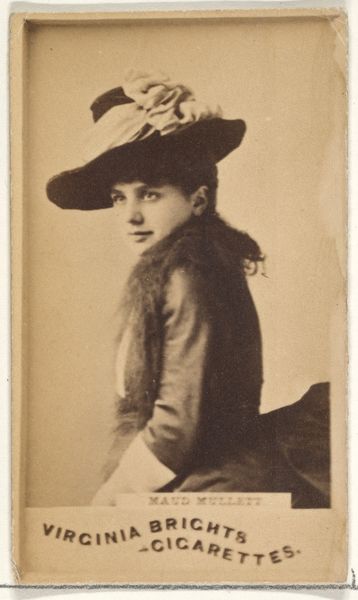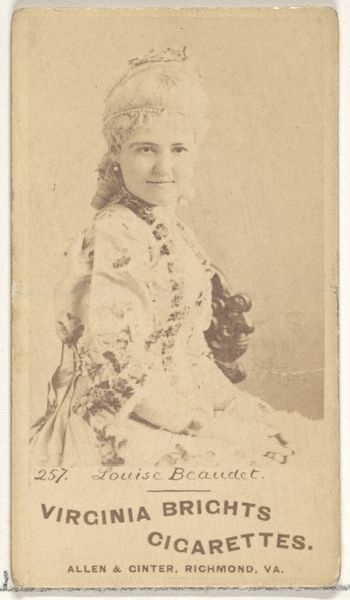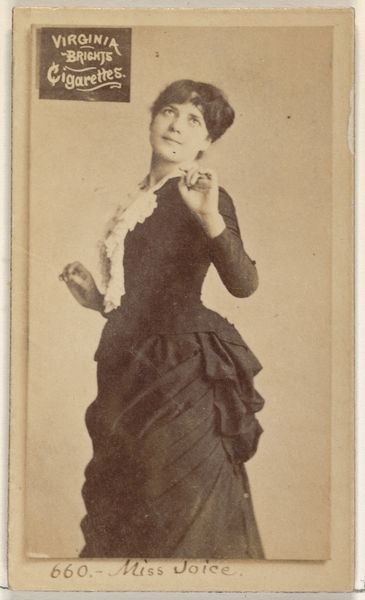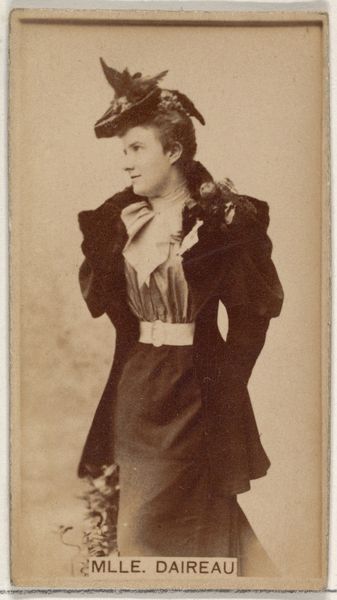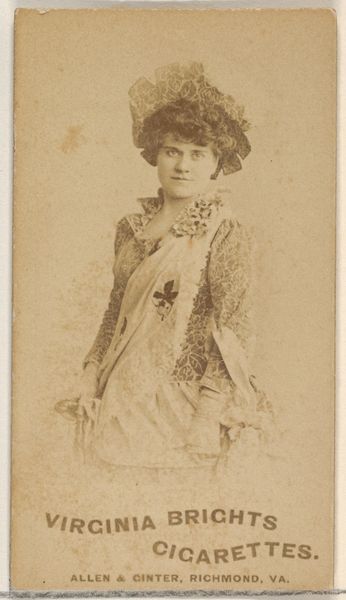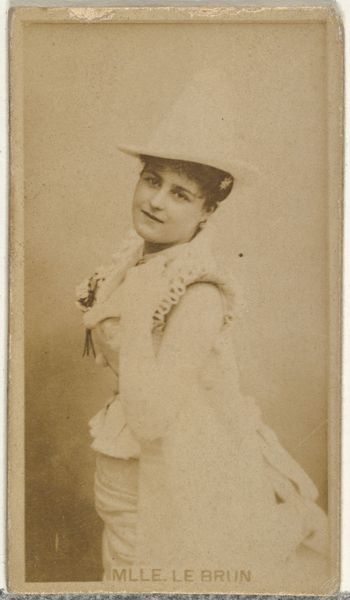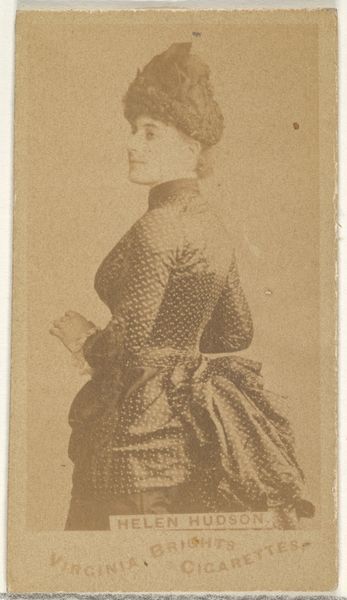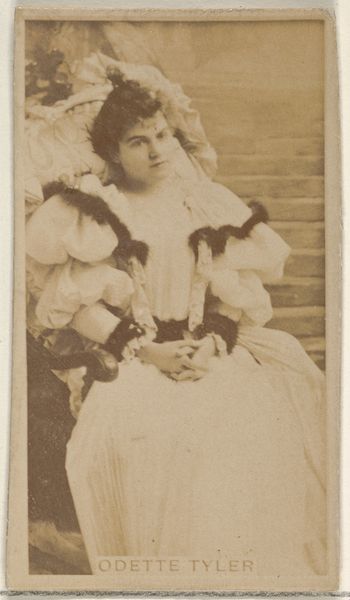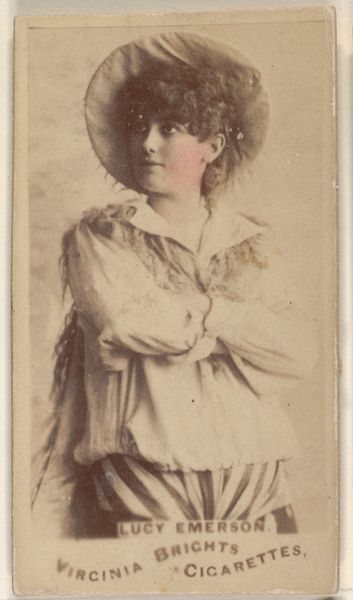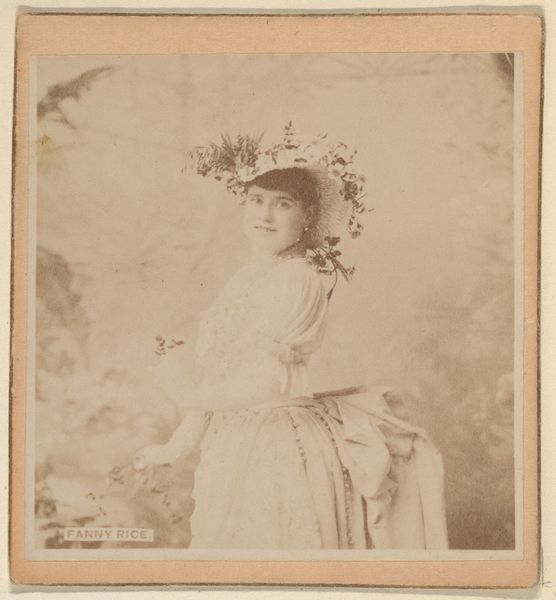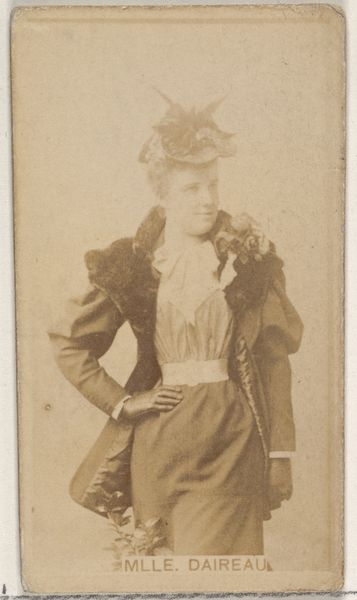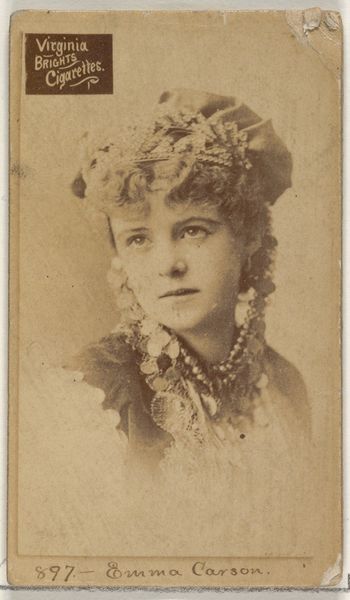
Maud Mullett, from the Actors and Actresses series (N45, Type 7) for Dixie Cigarettes 1885 - 1891
0:00
0:00
drawing, print, photography
#
portrait
#
drawing
# print
#
photography
Dimensions: Sheet: 2 5/8 x 1 1/2 in. (6.6 x 3.8 cm)
Copyright: Public Domain
Editor: Here we have "Maud Mullett, from the Actors and Actresses series (N45, Type 7) for Dixie Cigarettes," dating from between 1885 and 1891. It's a drawing, printed, and photographed work by Allen & Ginter, currently residing at the Met. I'm struck by the sort of… distant gaze she has. It’s a bit melancholic, maybe? What do you see in this portrait, beyond the surface? Curator: I see a layering of social constructs embedded within this seemingly simple image. Consider the “actress” – already a figure playing a role, and then captured in another role, that of the desirable commodity within an advertisement. The hat, the fur… all these contribute to an aspirational image. How do you think the average consumer would respond? Editor: I guess it was meant to be aspirational? Buying the cigarettes would make them feel closer to this glamorous figure, maybe? It feels a little manipulative. Curator: Exactly. And notice the gaze. Is it truly melancholic, or is it manufactured? How does the company, Allen & Ginter, want people to perceive her? And more importantly, what message is sent by mass-producing her image? Is the gaze of this woman the same as the Mona Lisa or Whistler's Mother? Or does the means of production dramatically change the intention? Editor: That makes me think about how images circulate. Her image would have been everywhere at that time, influencing perceptions in ways we can only imagine now. But why depict actors and actresses? Curator: The goal was to connect with existing cultural values and beliefs to create a perceived need for their products. These were not portraits of just anyone, but of known public figures. Their status provided an unspoken value proposition. Cigarettes gain symbolic associations with the cultural figures presented. Is there anything else you find intriguing? Editor: I hadn’t thought of the performative aspect of her “melancholy” – very meta! The context definitely shifts the meaning. I appreciate you pointing out the layers of imagery at play here! Curator: Indeed. Images, even those that seem simple, are often complex mirrors reflecting and shaping our culture.
Comments
No comments
Be the first to comment and join the conversation on the ultimate creative platform.
